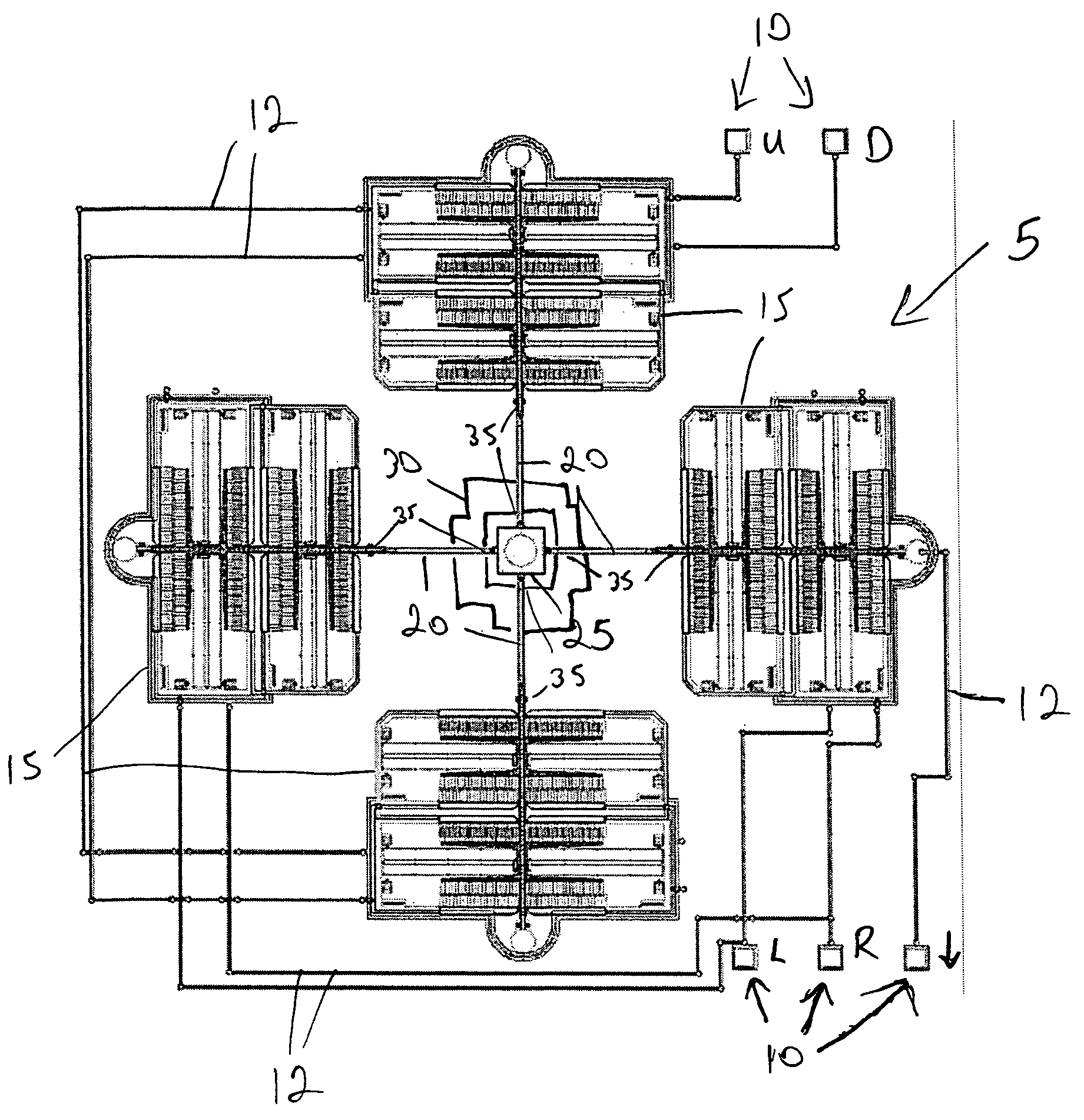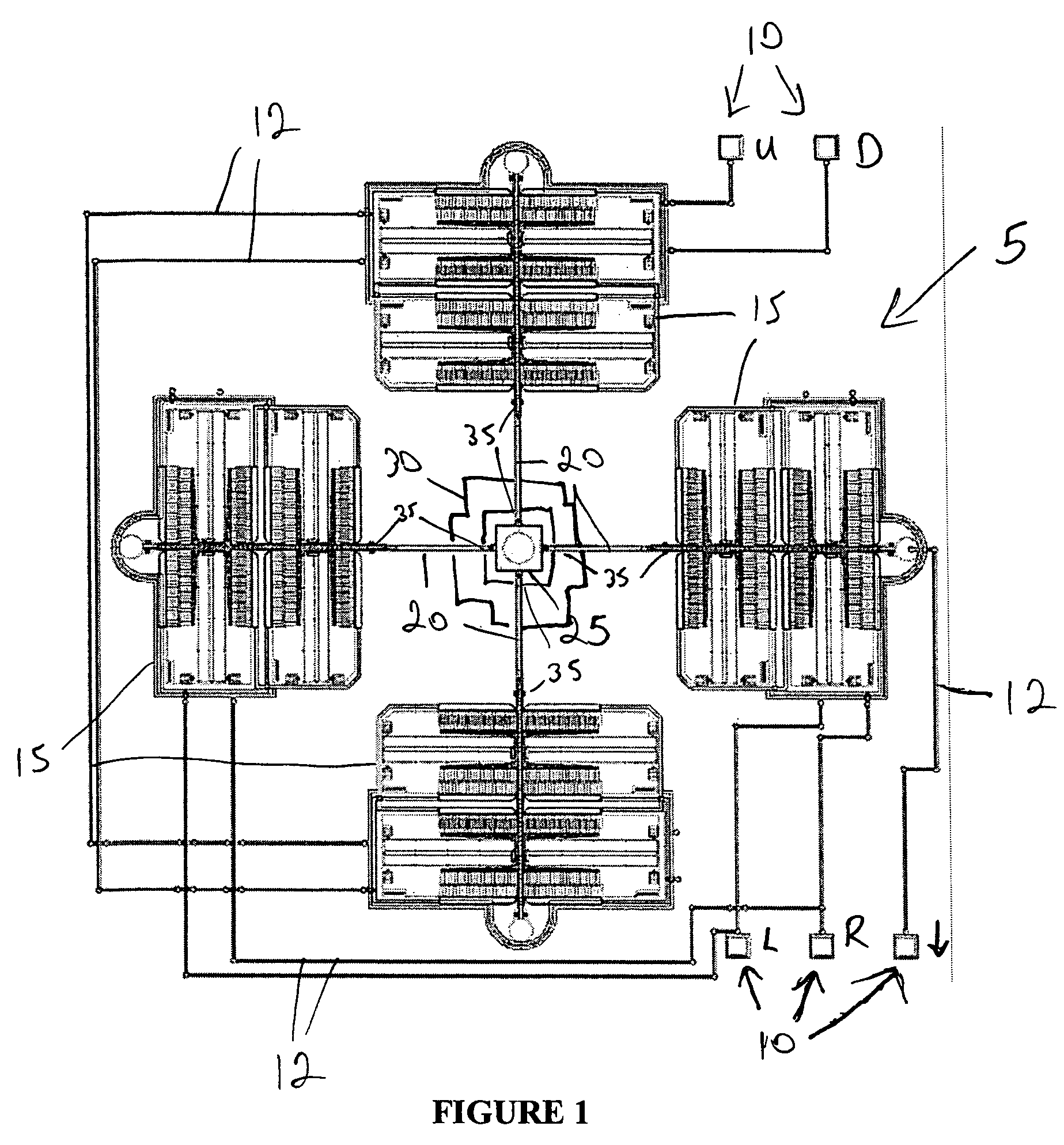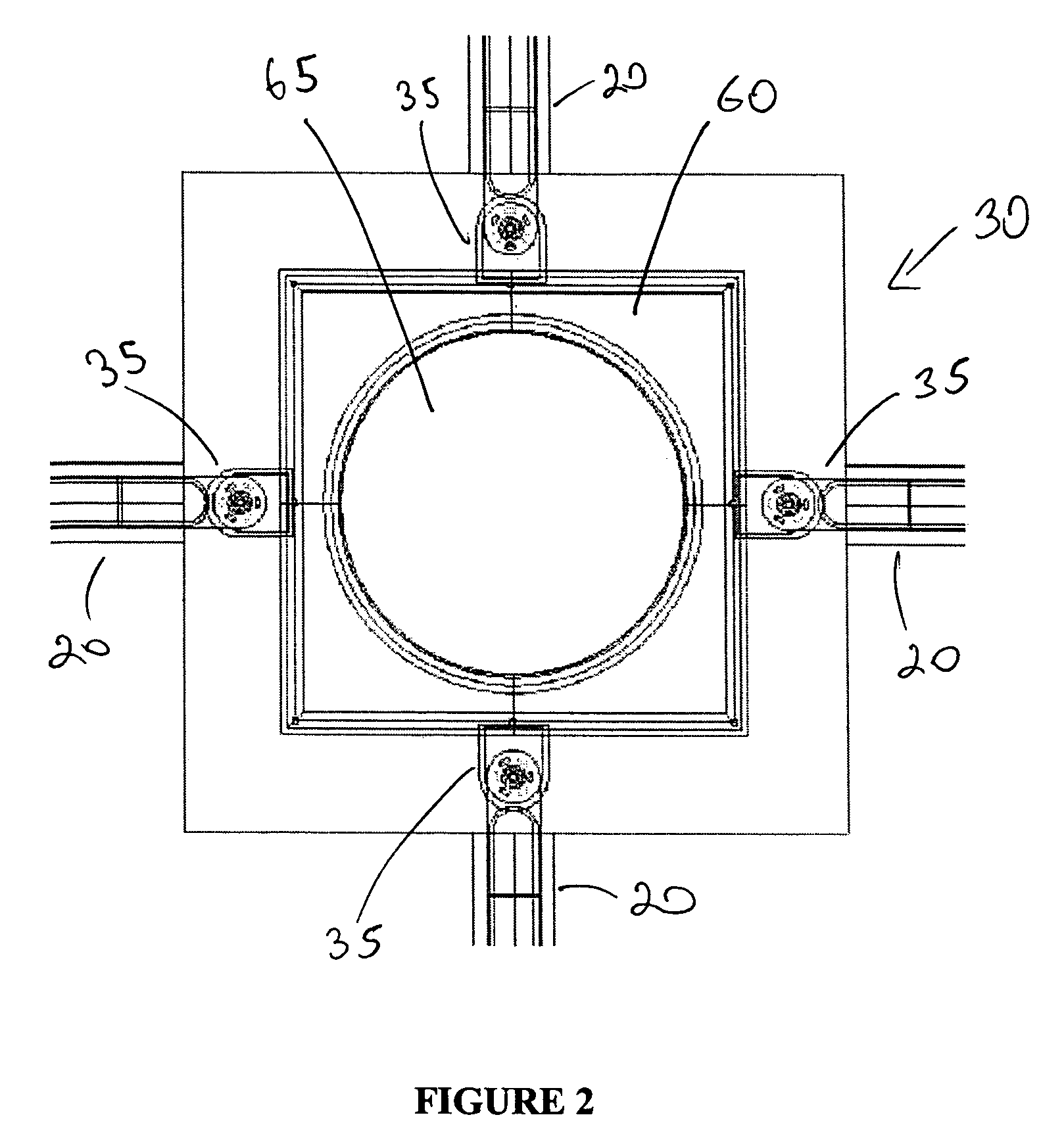MEMS-based optical communications beam steering apparatus
a beam steering and optical communication technology, applied in the field of optical communication, can solve the problems of long-distance free space optical communication, unwieldy, lack of speed, precision, reliability, etc., and achieve the effect of maximum signal strength
- Summary
- Abstract
- Description
- Claims
- Application Information
AI Technical Summary
Benefits of technology
Problems solved by technology
Method used
Image
Examples
Embodiment Construction
[0024]With reference to FIG. 1, the preferred embodiment of the present invention may be described. MEMS device 5 is constructed using IC / MEMS fabrication techniques, preferably successive selective deposition and etching using ultraviolet (UV) photolithography on a single crystal silicon wafer. Electrical signals propagated into device 5 enter through one of bond pads 10. Each bond pad 10 is connected by wirebonding to electrical conductive paths 12. Bond pads 10 and conductive paths 12 may be constructed of metal, highly doped polysilicon, or other conductive materials. Conductive paths 12 are, in turn, electrically connected to electrostatic comb-drive actuators 15. As a result of this arrangement, a signal voltage applied at a bond pad 10 is propagated to one or more electrostatic comb-drive actuators 15.
[0025]In the preferred embodiment, device 5 comprises four electrostatic comb-drive actuators 15. Comb-drive actuators operate on the principle of electrostatic repulsion betwee...
PUM
 Login to View More
Login to View More Abstract
Description
Claims
Application Information
 Login to View More
Login to View More - R&D
- Intellectual Property
- Life Sciences
- Materials
- Tech Scout
- Unparalleled Data Quality
- Higher Quality Content
- 60% Fewer Hallucinations
Browse by: Latest US Patents, China's latest patents, Technical Efficacy Thesaurus, Application Domain, Technology Topic, Popular Technical Reports.
© 2025 PatSnap. All rights reserved.Legal|Privacy policy|Modern Slavery Act Transparency Statement|Sitemap|About US| Contact US: help@patsnap.com



